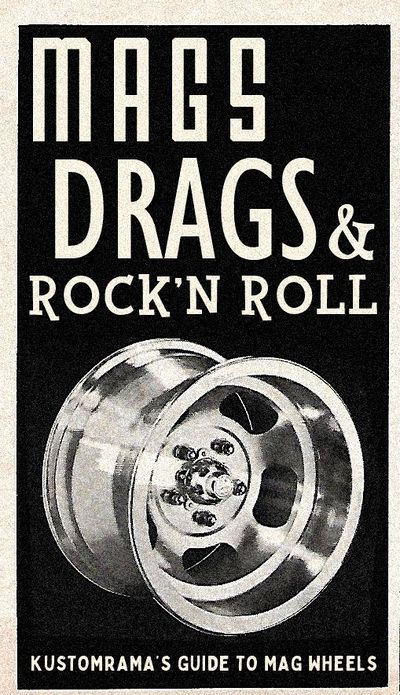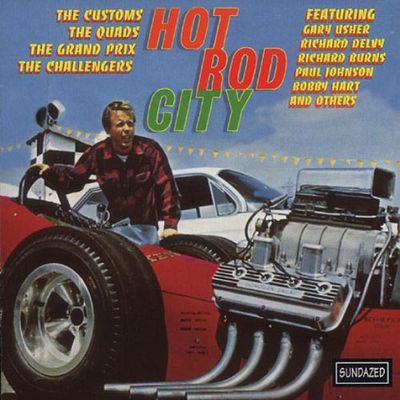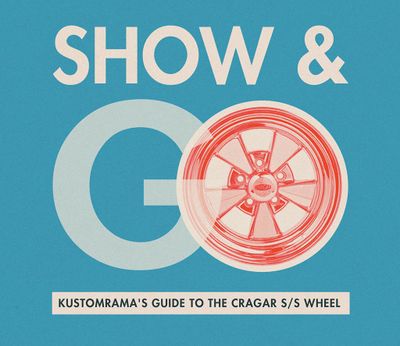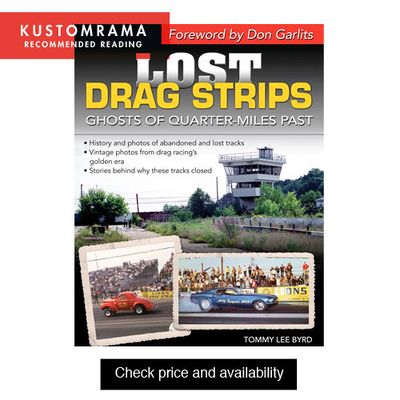Mags, Drags & Rock’n Roll - Kustomrama's Guide to Mag Wheels






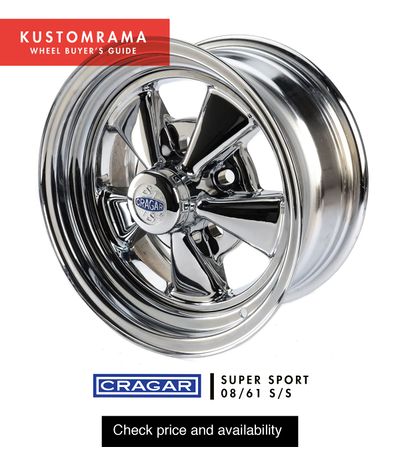

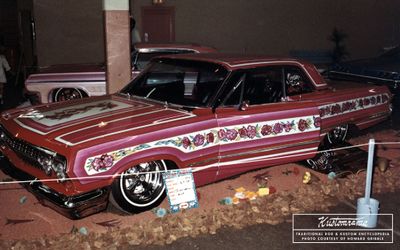











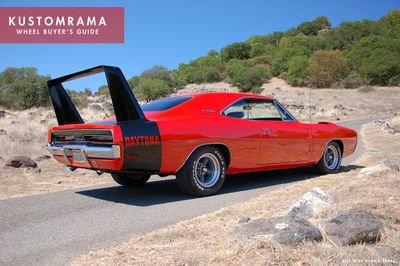
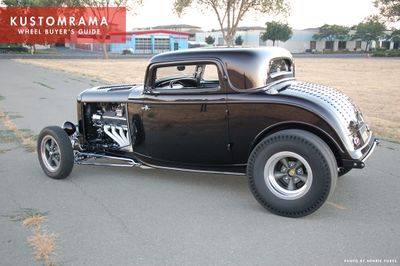











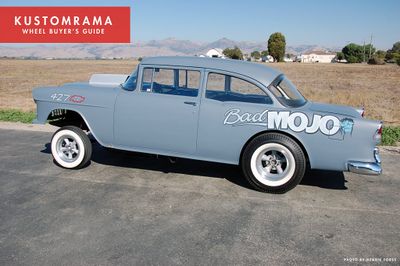
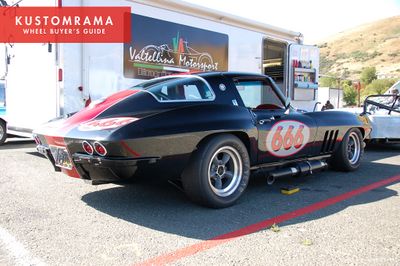



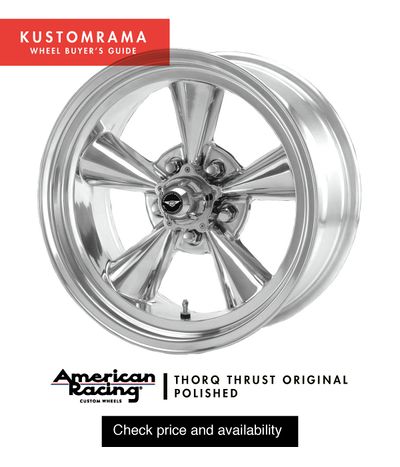

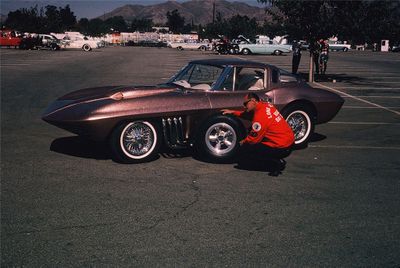



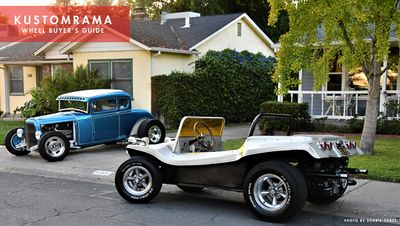



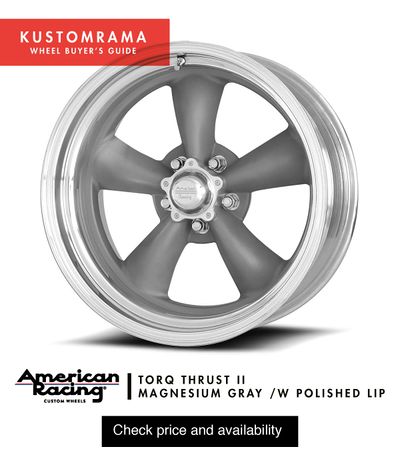

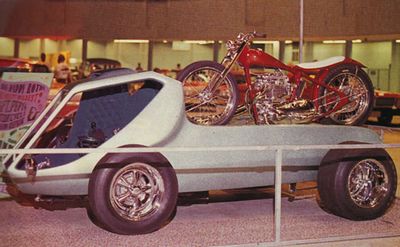


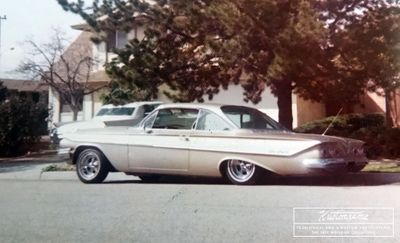


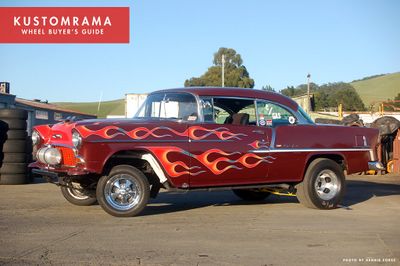

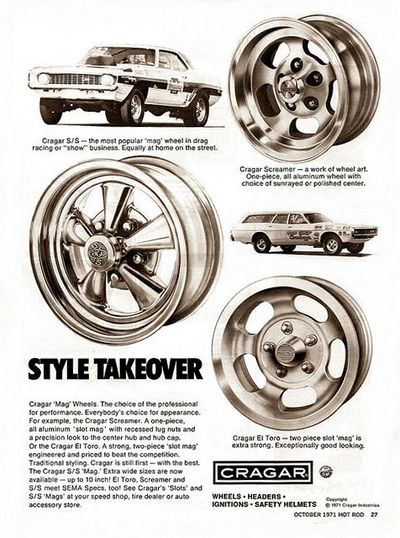





Guides, Reviews & Recommendations
Contents
- 1 What are Mag Wheels?
- 2 What are Slot Mags?
- 3 How and Why Mag Wheels Started
- 4 Note:
- 5 Famous Hot Rods and Custom Cars on Mag Wheels
- 6 Mag Wheels & Pop Culture
- 7 Movie Cars with Mags
- 8 It Keeps on Rolling
- 9 Are Mag Wheels Expensive?
- 10 How do I keep my Magnesium Wheels Shiny and Good-Looking?
- 11 How Do I Keep My Aluminum Wheels Shiny and Good-Looking?
- 12 Here are Some Good Products to Maintain Your Magnesium and Aluminum Wheels
- 13 Some of the Mag & Slot Mag Wheel Manufacturers of the 1940s - 1970s
- 14 Where Can I Buy Mag Wheels in 2024?
- 15 References
What are Mag Wheels?
Mag Wheels are wheels made out of magnesium. Magnesium is an excellent metal to add to an alloy to make wheels. Because magnesium is 1.5 times less dense than aluminum while retaining similar specific strength and damping capacities, it is possible to make a mag wheel lighter than an aluminum alloy wheel of the same strength. Especially in the 1960s, magnesium racing wheels became very popular. First and foremost, developed for motor sports of all sorts due to its lightweight, the mag wheel was soon adopted for street use.
What are Slot Mags?
Slot Mags is a wheel design that features slotted holes, usually 5, and became known as "slot mags." Few aftermarket wheel designs are as instantly recognizable as the aluminum slot wheel. When Ansen Automotive released their now iconic Ansen Sprint design with five holes in 1963, it quickly became hugely popular, and an enormous amount of copies soon flooded the market. This great design by Ansen became the norm of slot mags and can be seen on everything from skateboards to golf carts, dragsters, gassers to customs, hot rods, and vans. - Even soccer mom vans.
How and Why Mag Wheels Started
Halibrand started making magnesium wheels for auto-racing in 1946 and is commonly known to have been the first one out on the market. The reason for the magnesium wheels obviously being for the weight advantage compared to the old heavy steel wheels. But, it wasn't until the popularity of drag racing, especially in the late 1950s and forward, the lightweight wheels became extremely popular and boomed. As a matter of fact, both drag racers, hot rodders, and even custom cars all came to use them more often than not from then on and forward. If you look in a car magazine from the early to mid-1960s, you will find that virtually every Top Fuel or Fuel Altered drag racer is using rear magnesium wheels from Halibrand or American Racing. A few years later, you will see that almost every hot rod and show car was using mag wheels. It quickly became a way of expression instead of previously using a variety of hubcaps. American Racing with their Torque Thrust came to dominate the market in the early 1960s and became the ultimate hot rod wheel, followed by the equally iconic and cool Cragar S/S wheel released in 1964 that soon was seen on race cars and hot rods world wide. From the day the first custom wheels were produced, just as many types of custom center caps became available and important. Spiders, bullet caps, flat caps, dished caps, domed caps, two-blade spinners, three-blade spinners. Today, there are still a lot of options to choose from. Even the lug nuts are important. There are just as many styles of nuts as there are caps.
Note:
To clarify the word we are frequently using here, mags. Because even though the wheels of today are mainly made of aluminum, the word "mags" has stayed and is being used to describe these lightweight wheels in general.
Famous Hot Rods and Custom Cars on Mag Wheels
After the mag wheels started being produced in the early 1960s, many of the big-name customizers and hot rod builders started using them, and it didn’t take long until the world saw price-winning show cars displaying the latest in wheel fashion. Often paired with a set of fitting tires (not very seldom where the rear one's white wall slicks). A few of the most iconic builds are listed below; let’s see how many you knew about:
- Lil' Coffin – American Racing Torq-Thrust
- Gypsy Rose – Cragar S/S
- Munsters Dragula – American Racing TTII
- Munster Koach - American Racing TTII
- Lil' Red Wrecker – Cragar S/S
- Monkeemobile - Cragar S/S
Mag Wheels & Pop Culture
Mag wheels has always made a huge share of appearances in pop culture. Starting in 1963 when guitar/surf hero Dick Dale released his song, Mag Wheels (in more modern days, a song with the same title was written, recorded, and released by Charlie Parr.) In the mid to late 1960s, many of the popular surf bands used a hot rod with mag wheels on the cover, and there was many "hot rod sounds" record compilation featuring hot rods and race cars with mag wheels. To put it short, mag wheels was the ultimate craze during the 1960s, and no one wanted to be standing outside of the winner's circle.
Movie Cars with Mags
Many movies of the 1960s and the 1970s featured cars that sported mag wheels. A 1966 version of the Batmobile used sharp-looking Radir mag wheels for instance, and later on Appliance. In the 1970s, movie cars often rolled on slot mags.
The A-Team van had slot mags as did Starsky & Hutch's red and white Ford Torino, Steve McQueen's Mustang in the 1968 movie Bullit rolled on locally made American Racing Torque Thrust II. The green Dodge Charger in the 1973 movie Dirty Mary Crazy Larry rolled on slot mags, and the 1955 Chevy in Two-Lane Blacktop, on American Racing 200S Wheels. The orange iconic long jumping Dodge Charger in the Dukes of Hazzard used American Racing's Vector Wheels. The list is endless and will never stop.
It Keeps on Rolling
The popularity of the mag wheel has never really faded. On the contrary, it has regularly experienced new bursts of popularity. Especially the slot mags. In the late 1960s, when the muscle car era became popular, mag wheels hit a new high. The 1970s equally so where many dune buggies had mags, as did the street machines and many early lowriders. In the 1970s and the 1980s, the van craze hit hard, and it became a norm to roll on wide slot mags. Nowadays, the mag and slot mags have become nostalgic, and they are commonly seen on everything they used to be seen on – and more. Hot rods, street rods, dune buggies, gassers, muscle cars, custom cars, and even daily drivers. There is definitely a good-looking style for whatever you are driving.
Are Mag Wheels Expensive?
Just like so many other collectible items in the car culture, rare, sought-after items have become very expensive. Especially the real magnesium wheels, Halibrands are always on top of that list. While a lot of people out there need the "real deal" for a possible period perfect high-dollar restoration, some are just as happy with a set of vintage slot mags. Often referred to as the "poor man Halibrand's." The popularity of mag wheels and slot mags is very evident as we find a lot of them to be still manufactured today and delightfully also very easy access for purchases online.
How do I keep my Magnesium Wheels Shiny and Good-Looking?
Magnesium that has been brightly polished is unique and striking. It is beautiful. After you polish it to a beautiful mirror finish, as time passes, it will gradually turn gray and then dark gray with a bit of green. Some people like that "patina" on it and are ok with that look. Leave it out in the elements, and it will eventually deteriorate and fall apart. It is also extremely difficult to weld, so you want to take good care of what you have. Magnesium is dangerous. If it ever catches fire, throw a bucket of sand on it and get out of the way. When magnesium burns, it virtually can't be stopped. Small quantities of magnesium are used to make photo flash bulbs. Larger quantities are used to make bombs. Be aware. There is no other metal that is so tough to deal with. Still, many of the most desirable drag racing parts were made out of magnesium.
The biggest challenge in taking care of magnesium parts is preserving them since exposure to humidity makes magnesium oxidize. When magnesium parts are left unprotected and exposed to moisture, so-called pits can eventually grow to over an eighth of an inch in diameter quickly. A sign that magnesium castings are getting ready to become pitted is the appearance of a fine white powder in places. Magnesium parts must be stored in a dry area free of humidity. Bare magnesium wheels can be sprayed with WD40, which will offer some protection until it evaporates. Some people store their magnesium parts in thick plastic bags and use a vacuum cleaner to draw as much of the air out of the bag as possible before tightly sealing them.
How Do I Keep My Aluminum Wheels Shiny and Good-Looking?
Aluminum wheels are not as hard to maintain and keep shiny as magnesium are. The aluminum wheels will not deteriorate or drastically change color in the elements. However, they will eventually get dull and appear grayer than chrome. If you let them get dull and/or dinged and scratched up, you will have a painstaking job ahead of you wet sanding and buffing them up to their original shiny finish. So, just like anything. Stay on top of things. Wash, clean, and buff regularly.
Here are Some Good Products to Maintain Your Magnesium and Aluminum Wheels
- Voodoo Ride ® VR-1014 Wheel Cleaner with Iron Remover Fast-Acting
- Chemical Guys Diablo Wheel Gel Concentrated Wheel Cleaner (Safe on All Wheel & Rim Finishes)
- Adam's Wheel Cleaner
- Quality Chemical Mag Brite - Acid Wheel and Rim Cleaner formulated to Safely Remove Brake dust and Heavy Road Film
- Renegade Products Aluminum Polishing Mini Kit Complete with Buffing Wheels, Buffing Compounds, Right Angle Grinder Safety Flange, Rebel Pro Red Hand Polish and Microfibers
- 9PCS Buffing Wheels for Drill, Flannelette Polishing Wheels Mixed Polish Pads and Wheel Cleaning Brush Kit with 1/4 Shaft for Car Wheel Aluminum Stainless Steel Chrome Manifold Washing & Polishing
Some of the Mag & Slot Mag Wheel Manufacturers of the 1940s - 1970s
- Accelco
- American Dragmaster
- American Racing
- Ansen
- Appliance
- Astro
- Astro Supreme
- Aunger
- Cal Custom
- Centerline
- Colorado
- Cragar
- Crestline
- C-T Alloy
- C-T Automotive
- Dayton
- Durachrome
- EMPI
- E-T Mags
- Fenton
- Halibrand
- Honest Charley
- HP (Hayden Proffitt)
- Hurst
- J.C. Whitney
- J.C. Penney
- Kelsey Hayes
- Ken's Equipment Co.
- Keystone
- Mickey Thompson
- Minilite
- Montgomery Ward
- Mr. Gasket
- Rader
- Rebel
- Rocket
- Rockwell International
- ROH
- Sears
- Shannon
- Speed Engineering
- Speedway Motors
- Spyder, Magnum 500 etc (Motor Wheel Corporation)
- Superior
- U.S. Mags
- U.S. Wheel
- Weiand
- Western
- Wolfmags
Where Can I Buy Mag Wheels in 2024?
On every given swap meet, you will find mag wheels for sale, as well as on eBay. However, these days a lot of the most popular mag wheels and models are also reproduced and available for purchase online. Featured in this article, you will find some of the wheels we dig the most. Wheels you can easily order from Amazon.com.
Affiliate Disclosure: Some of the links on this page are affiliate links. If you click on these links and make a purchase, we may earn a commission at no additional cost to you. As an eBay Partner Network affiliate, we earn from qualifying purchases. This helps support our work in bringing you valuable content.
References
Did you enjoy this article?
Kustomrama is an encyclopedia dedicated to preserve, share and protect traditional hot rod and custom car history from all over the world.
- Help us keep history alive. For as little as 2.99 USD a month you can become a monthly supporter. Click here to learn more.
- Subscribe to our free newsletter and receive regular updates and stories from Kustomrama.
- Do you know someone who would enjoy this article? Click here to forward it.
Can you help us make this article better?
Please get in touch with us at mail@kustomrama.com if you have additional information or photos to share about Mags, Drags & Rock’n Roll - Kustomrama's Guide to Mag Wheels.
This article was made possible by:
SunTec Auto Glass - Auto Glass Services on Vintage and Classic Cars
Finding a replacement windshield, back or side glass can be a difficult task when restoring your vintage or custom classic car. It doesn't have to be though now with auto glass specialist companies like www.suntecautoglass.com. They can source OEM or OEM-equivalent glass for older makes/models; which will ensure a proper fit every time. Check them out for more details!
Do you want to see your company here? Click here for more info about how you can advertise your business on Kustomrama.
